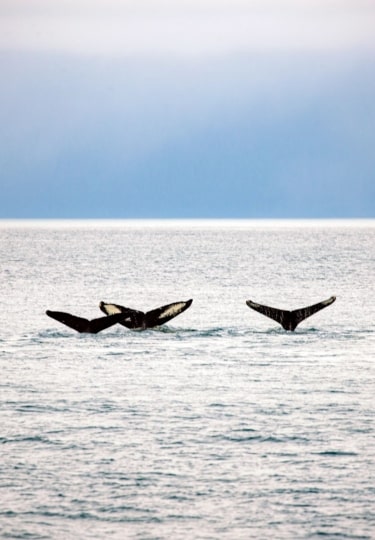Whale watching in Alaska is an exhilarating experience that captivates marine enthusiasts with its remarkable array of whales and dolphins.
During your coastal journeys in Alaska, keep an eye out for migratory species like humpback whales and gray whales. You may also come across other species, ranging from smaller minke whales to colossal fin whales.
Alaska is home to a variety of year-round marine mammals, including black and white orcas (also known as killer whales, the largest member of the Delphinidae dolphin family), playful beluga whales, swift-swimming Dall’s porpoises, and harbor porpoises.
With such a diverse collection of marine species at hand, your thrilling encounters with these magnificent cetaceans will be etched into your memory for many years after your Alaska whale-watching adventures have come to an end.
Hubbard Glacier
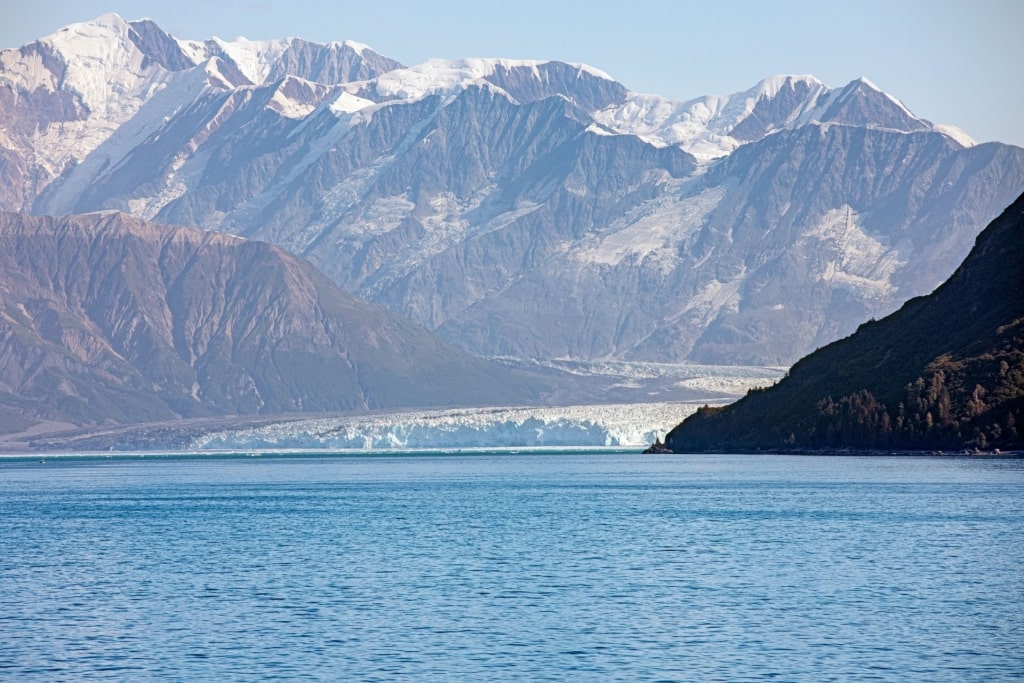
Hubbard Glacier
One of the best places to visit in Alaska, Hubbard Glacier is an enormous tidewater glacier, stretching 76 miles from Mount Logan in Canada to Yakutat Bay. This mountain of ice also happens to be one of North America’s most active glaciers.
With a width of around six miles at its face, Hubbard Glacier is also one of the world’s widest tidewater glaciers, marked by frequent and thunderous calving events.
The face of the glacier is also a prime spot for whale watching in Alaska. Sea birds frequently soar above the ice in search of fish.
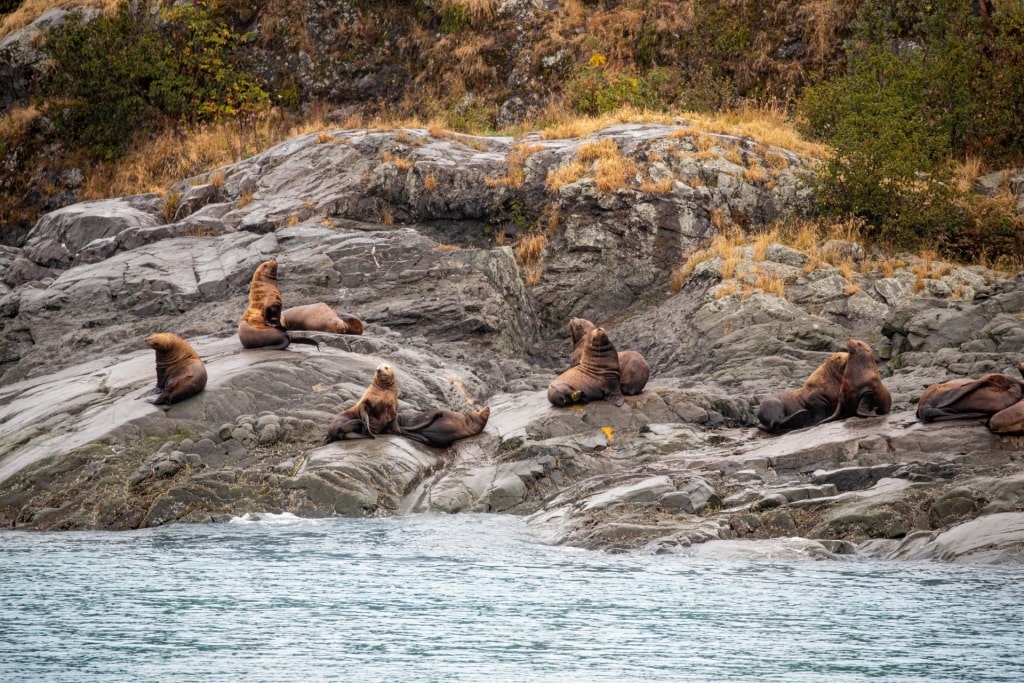
Seals
Just beyond the icy barrier, orcas stealthily patrol the water, looking for seals or sea lions to dine on for their next meal.
Humpbacks visit Yakutat Bay to gulp down krill (small shrimp-like crustaceans), while bald eagles command the skies above. Occasionally, minke and beluga whales also grace Yakutat Bay with their presence, making Hubbard Glacier a truly awesome spot for whale encounters.
Point Adolphus, Icy Strait Point
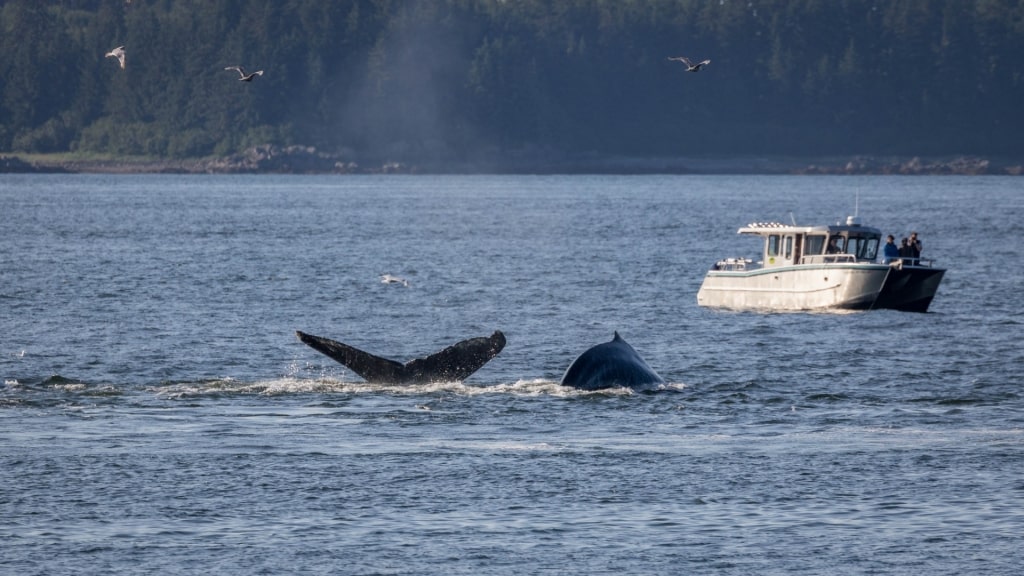
Point Adolphus, Icy Strait Point
Icy Strait Point is known as one of the best places to go whale watching in the world, and Point Adolphus in particular delivers a variety of opportunities to observe whales and dolphins in their natural habitat.
These coastal waters in Icy Strait Point are legendary for their gigantic humpback whales, which are something to behold. You’ll be able to observe their incredible breaching displays and listen to their haunting songs, especially between May and August.
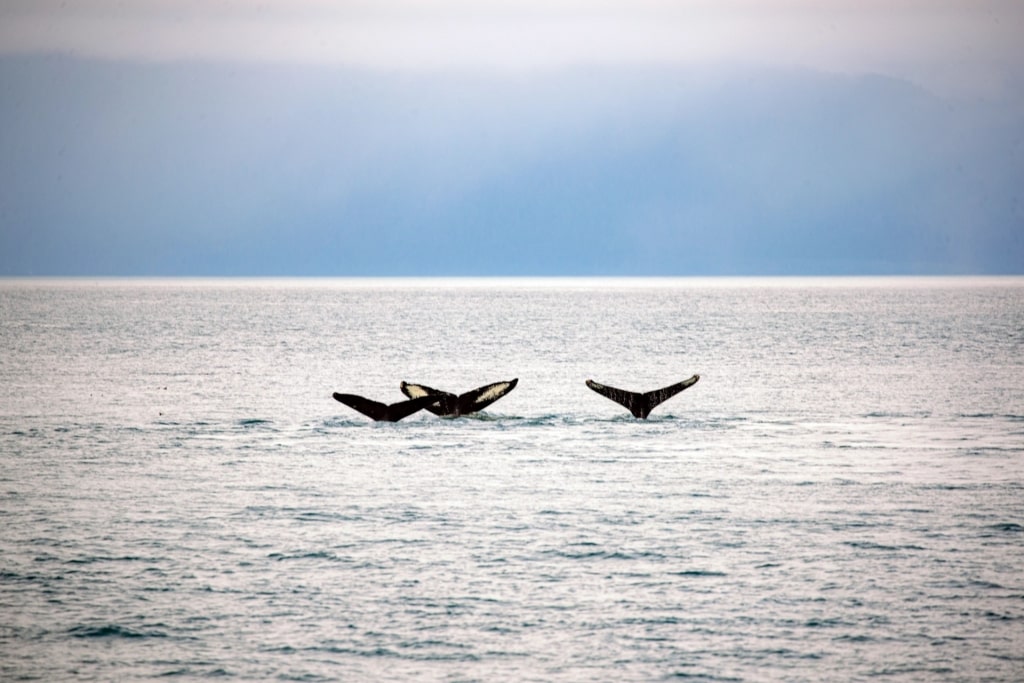
Point Adolphus, Icy Strait Point
The area’s distinctive blend of powerful tidal currents and underwater terrain fosters nutrient-rich food sources like krill for these baleen filter feeders to feast upon. An adult humpback can reach 40 to 50 feet in length, and clock in at up to 40 tons in weight.
Other marine mammals drawn to Icy Strait include sea otters, Steller sea lions, Dall’s porpoises, and killer whales. To experience these Alaskan animals in their wild grandeur, consider booking a whale-watching charter, or even signing up for a kayak tour.
Resurrection Bay & Kenai Fjords National Park, Near Seward
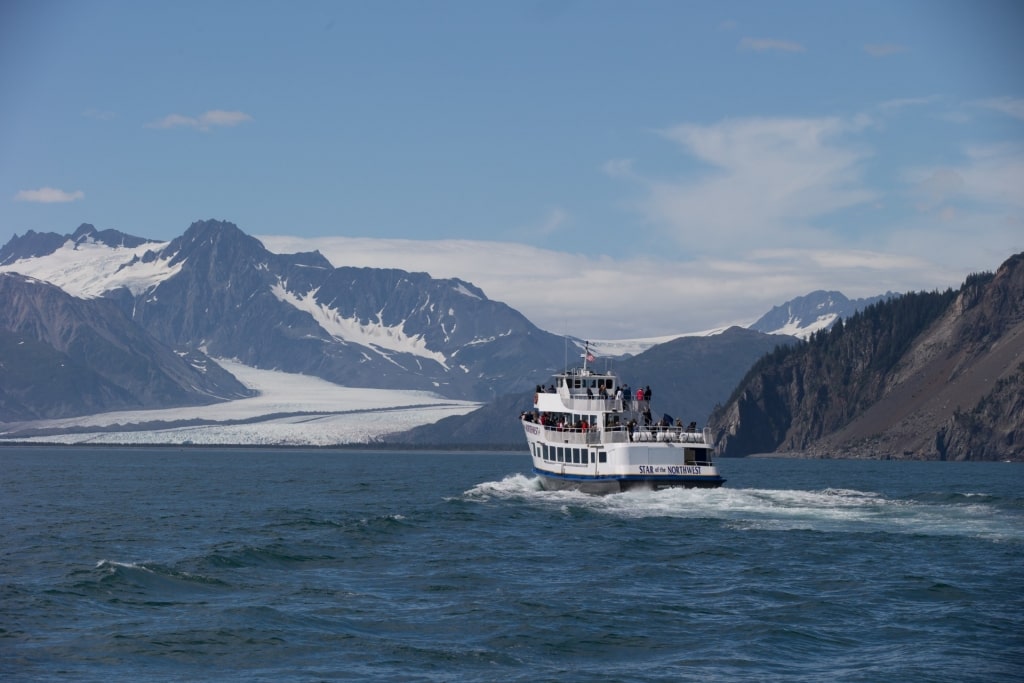
Kenai Fjords National Park, near Seward
Resurrection Bay and Kenai Fjords National Park, near Seward, offer remarkable whale and dolphin experiences. The region can boast year-round whale sightings, although the best time to see whales is usually March through October.
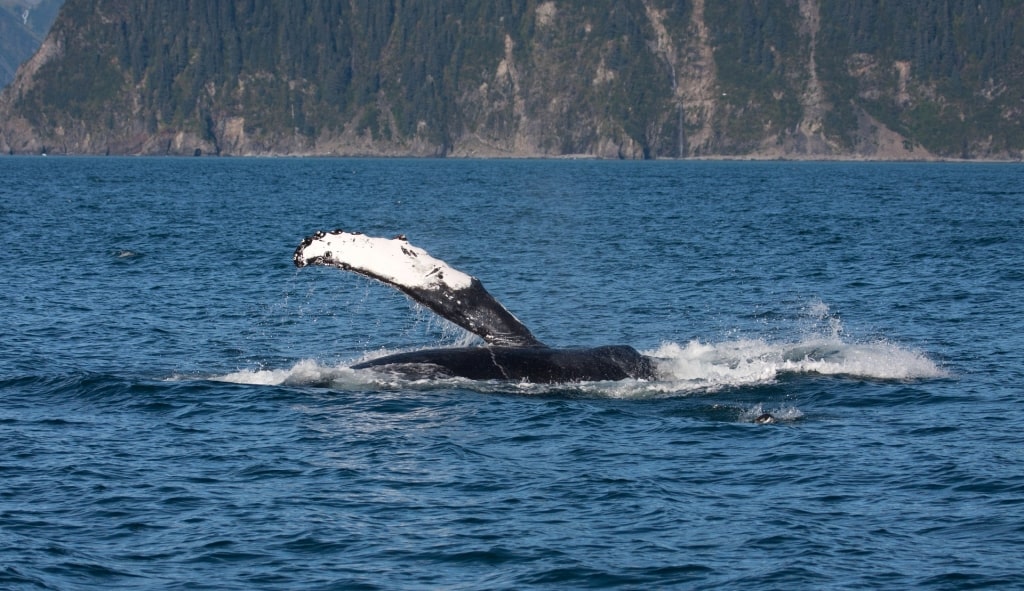
Resurrection Bay, near Seward
The fjords in this area are rich in nutrients, which attract a wide variety of wildlife. During the spring, around March and April, gray whales make their way from Baja to the Arctic through the Gulf of Alaska.
In May, humpback whales arrive after migrating from Hawaii and Mexico, seeking krill-filled waters, where they feed until October.
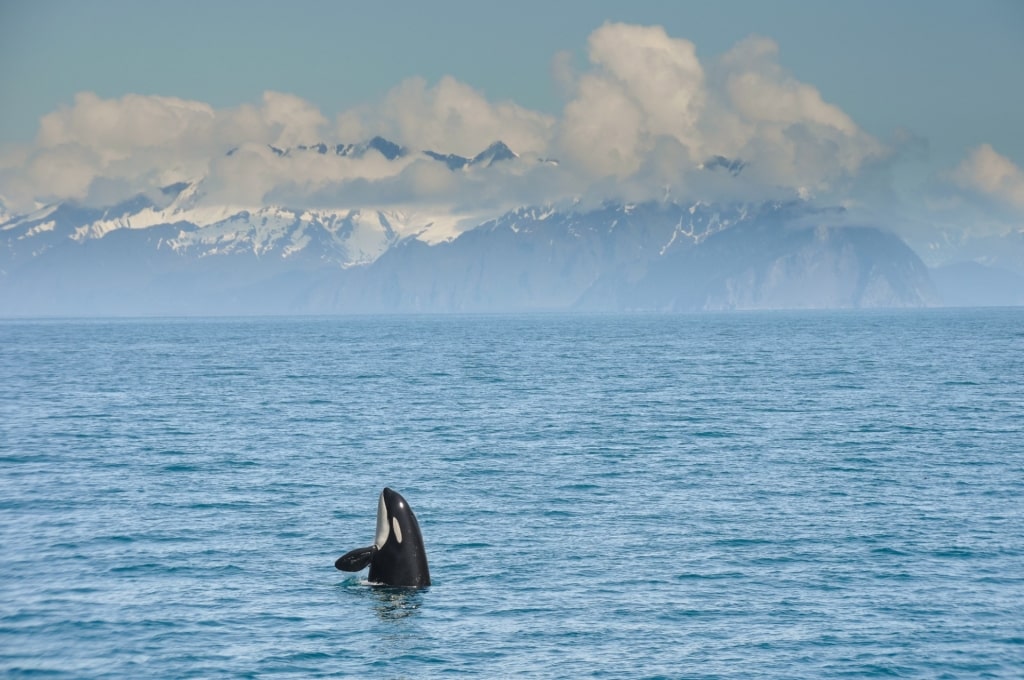
Resurrection Bay, near Seward
In addition to spotting humpback whales and gray whales, Resurrection Bay and Kenai Fjords National Park will also likely provide you the opportunity to see orcas in action as they hunt for their food.
You can also see lively Dall’s porpoises, named after the American naturalist William Dall, showcasing their playful aquatic skills here, plus smaller harbor porpoises swimming along the coastline.
Misty Fjords, Near Ketchikan
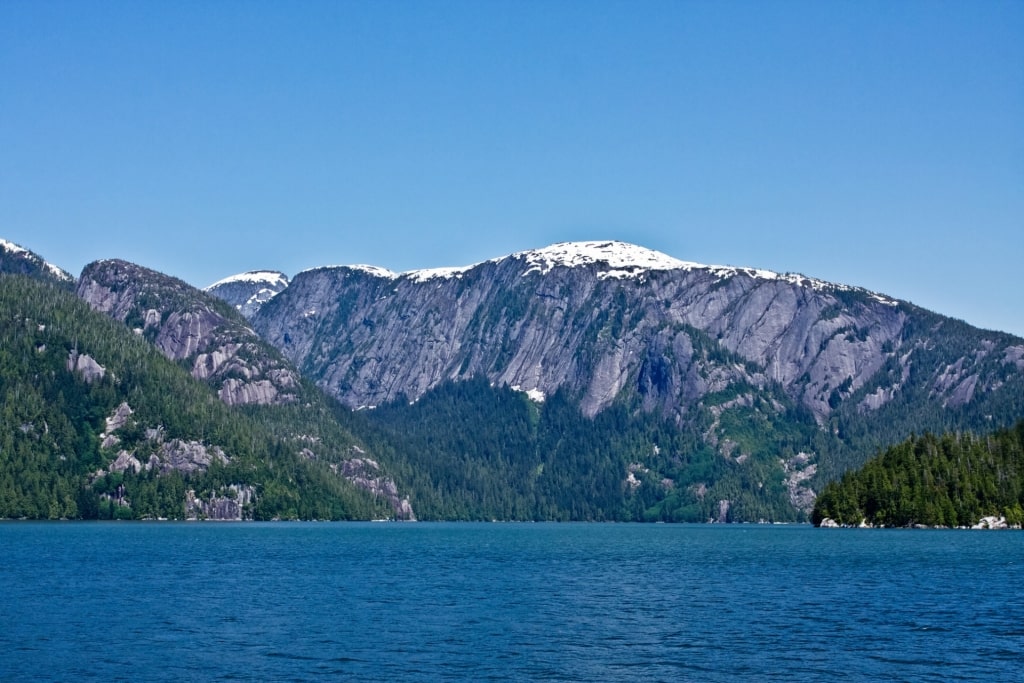
Misty Fjords, near Ketchikan
Misty Fjords, an expanse of water sculpted by beautiful Alaskan glaciers, and surrounded by rugged terrain and steep cliffs, is defined by its boundless beauty.
To access the fjords, which lie northeast of Ketchikan, you’ll journey through Revillagigedo Channel, a water passage frequented by orcas and porpoises.
You can also experience the striking narrow fjords from a unique perspective by boarding a floatplane, providing you with a captivating bird’s-eye view. For a closer and more personal encounter with the region’s whales, you might want to consider booking a kayak excursion as well.
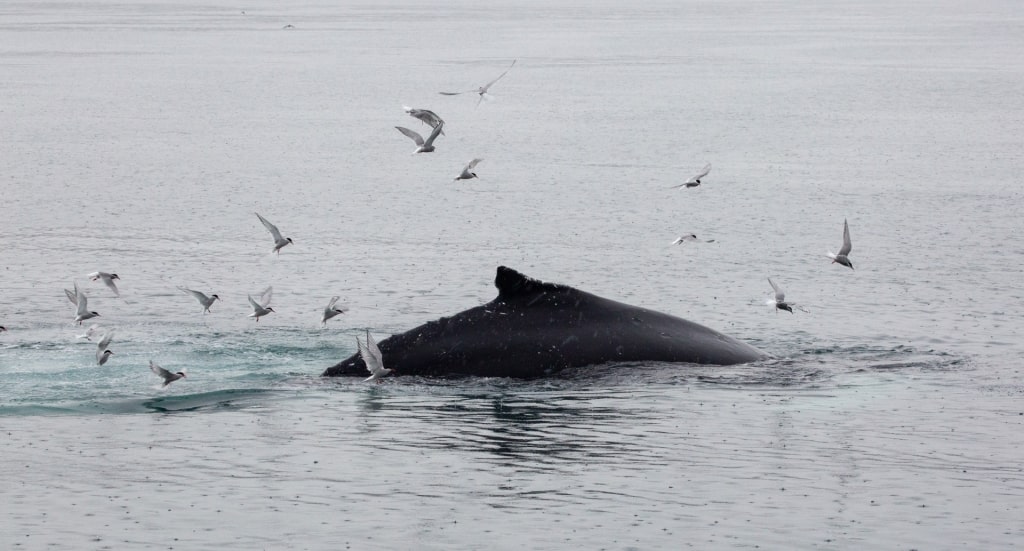
Humpback whale
Within the Misty Fjords National Monument Wilderness, the waters serve as a bountiful feeding habitat for humpback whales, Steller sea lions, and harbor seals.
Humpback whales, known for their arresting appearance, frequently breach the water’s surface, leaving an indelible impression on anyone who gets the chance to see them in the wild.
Turnagain Arm, Beluga Point, and Cook Inlet
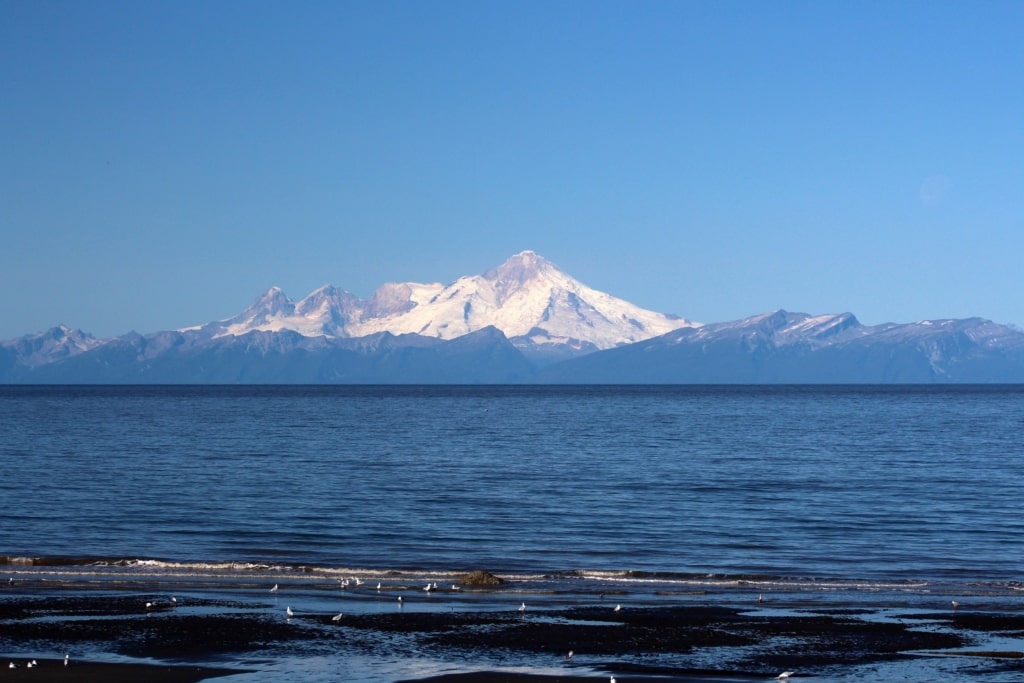
Cook Inlet
While engaging in whale-watching activities in Alaska, there are instances when you may need to invest some effort to catch sight of specific species, such as the Cook Inlet beluga whales.
The name “beluga” is derived from the Russian word for white; these ethereal white whales embody their name.
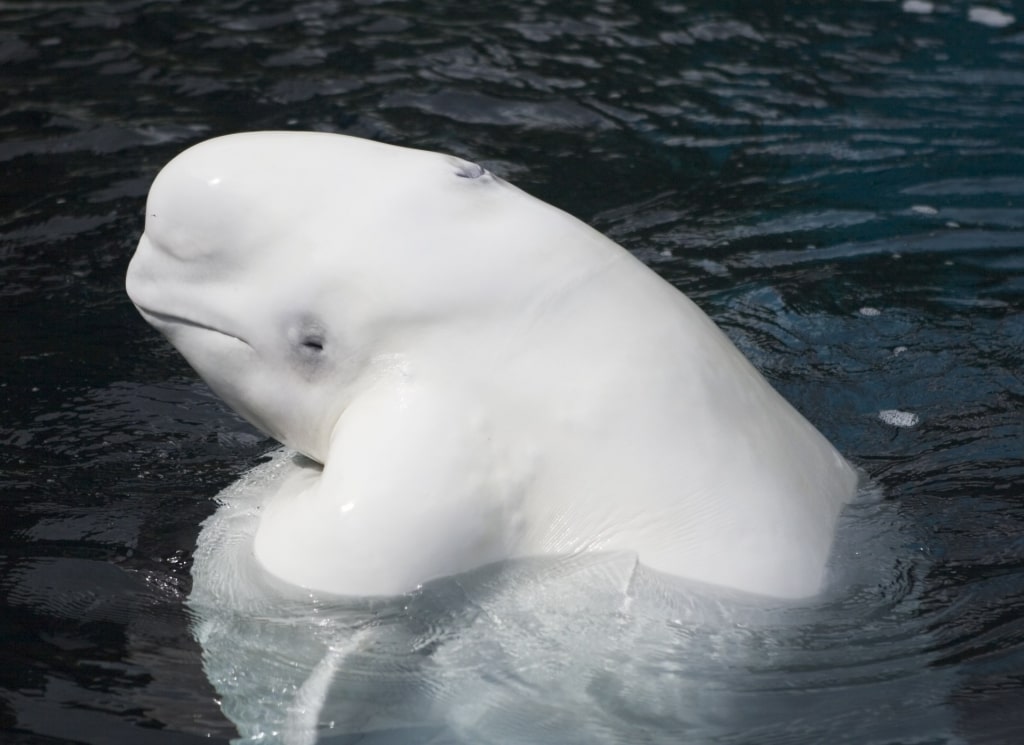
Beluga whale
The best time to visit Alaska to observe Cook Inlet belugas is from mid-August to October. These genetically unique, isolated, and endangered whales reside year-round in the muddy waters of the inlet.
The local belugas here navigate silty glacial rivers in search of food and can be spotted in the upper inlet river and bays near Anchorage during the spring to fall season.
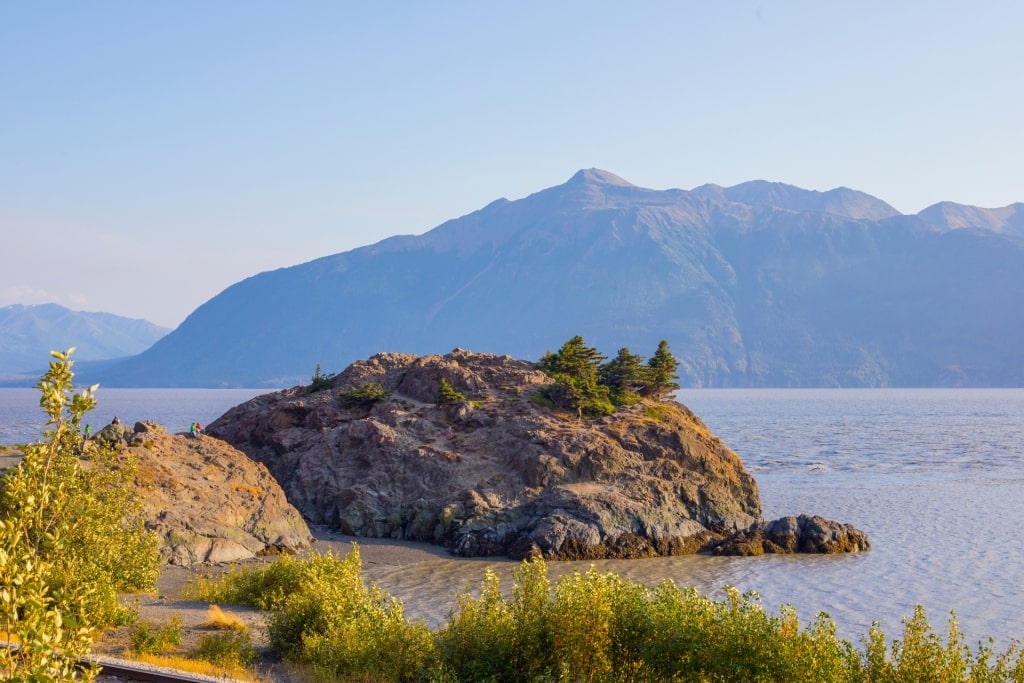
Beluga Point
Beluga Point, a rocky outpost along the Seward Highway, south of Anchorage, offers frequent sightings of these smallish white whales, especially during high tide. They don’t breach like other whales, so you’ll need keen eyes to spot them.
You can also observe belugas from scenic lookouts like Point Woronzof Park or Ship Creek Small Boat Launch, plus various turn-offs along the Seward Highway, which borders the Turnagain Arm coastline.
Haines, Skagway, & Davidson Glacier
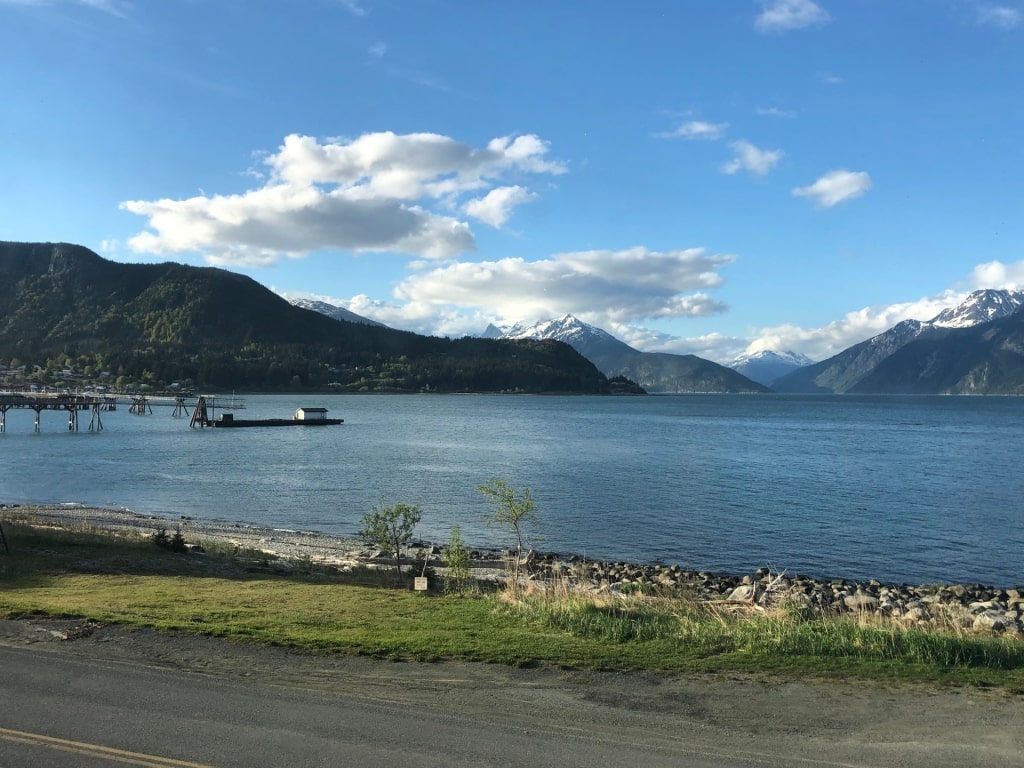
Haines
During the summer, humpbacks and killer whales traverse the Upper Lynn Canal seeking out different sources of food.
You can opt for a safari aboard smaller vessels from Haines or Skagway, located on Lynn Canal, North America’s deepest fjord. These safaris will transport you to the heart of the canal, offering you a closer view of the brilliant Davidson Glacier.

Davidson Glacier
While making your way toward the face of Davidson Glacier, be sure to remain attentive to the presence of humpback whales, sea lions, seals, and other local wildlife.
Endicott Arm & Dawes Glacier, Near Juneau
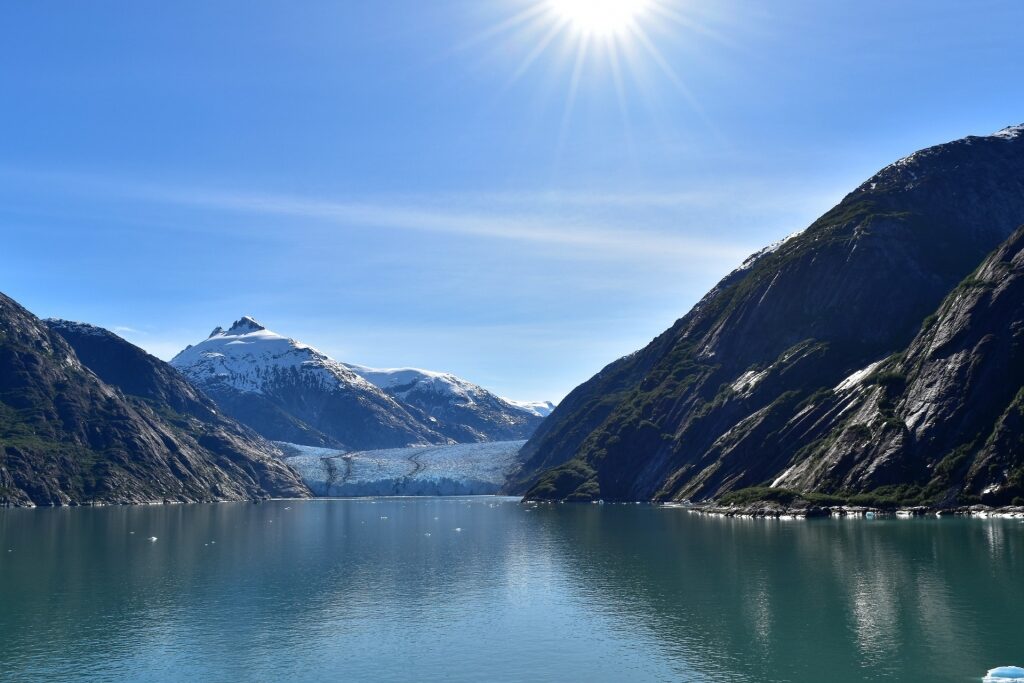
Endicott Arm
South of Juneau, Alaska’s capital, lies the entrance to Tracy Arm Fjords Terror Wilderness, near Holkham Bay. This wild region encompasses Tracy Arm and Endicott Arm, both accessible from Holkham Bay.
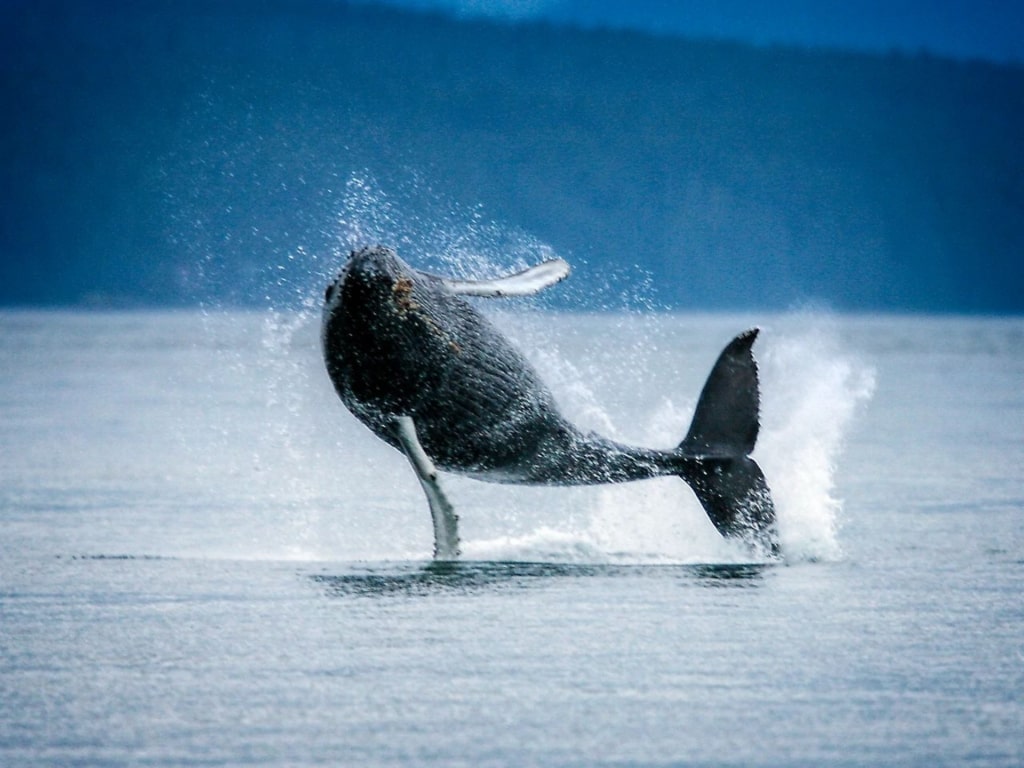
Humpback whale
You’re sure to have a wonderful Alaska whale-watching trip through Endicott Arm, a deep fjord, as you watch humpback whales swimming and breaching, spot porpoises and orcas, and marvel at the tidewater Dawes Glacier in all its grandeur.
Getting to witness the extraordinary sight of humpback whales releasing plumes of water from their blowholes against the majestic backdrop of calving glaciers and snow-capped Alaskan mountains in Endicott Arm is an experience you won’t soon forget.
Prince William Sound, Near Anchorage
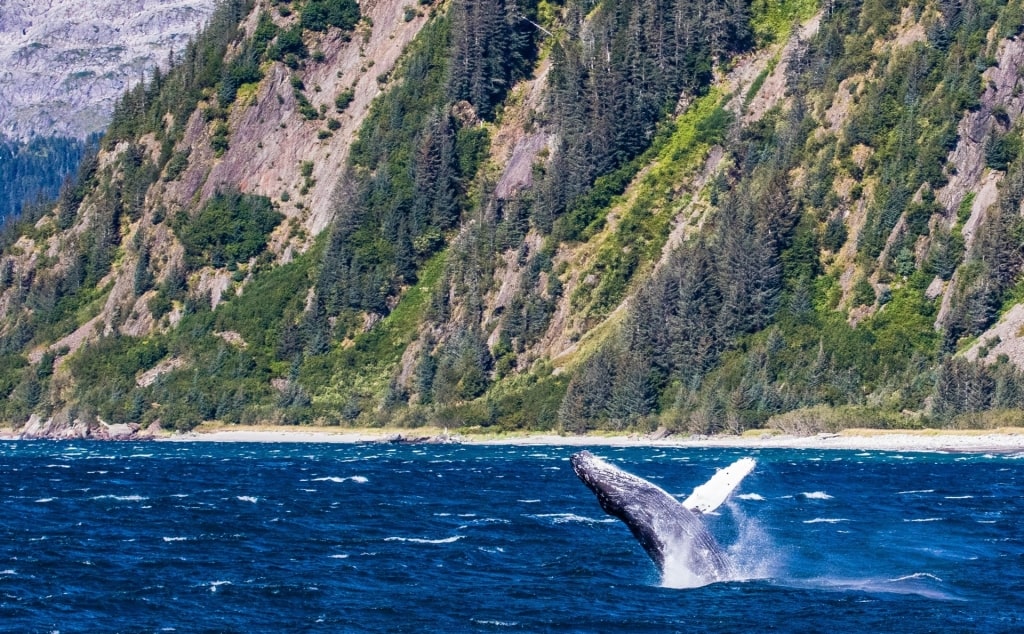
Prince William Sound, near Anchorage
Prince William Sound, spanning thousands of miles of coastline, is a superb location for whale watching in Alaska. Some of the whale species you may meet here include fin, gray, humpback, and even minke whales. Of course, those wide-ranging, clever predators, the orcas, are present as well.
The sound, bordered by the jagged Chugach Mountains to the east and north, and the scenic Kenai Peninsula to the west, is home to a diverse marine wildlife population, which also includes sea otters, harbor seals, Dall porpoises, and Steller sea lions.
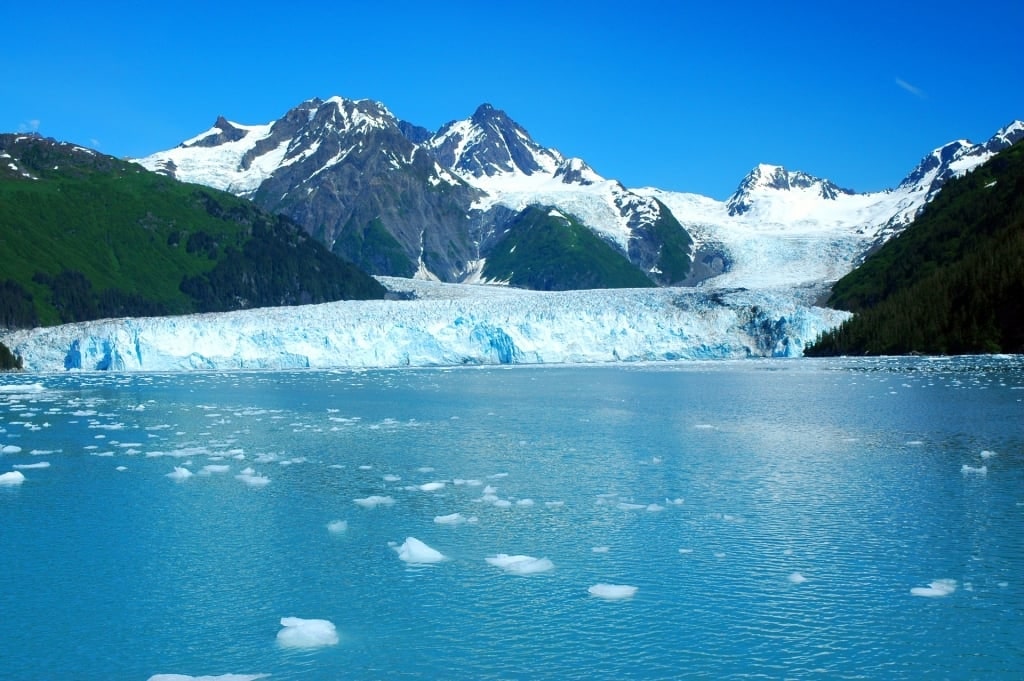
Prince William Sound
Located close to Anchorage, Prince William Sound offers a wide selection of whale-watching adventures to choose from, departing from Whittier, near Anchorage, and Alyeska.
During the spring and summer months, Prince William Sound becomes an exciting hub of whale-based activity, providing you with the possibility of witnessing these amazing creatures in action as they socialize, play, and search for food.
Kachemak Bay, Near Homer
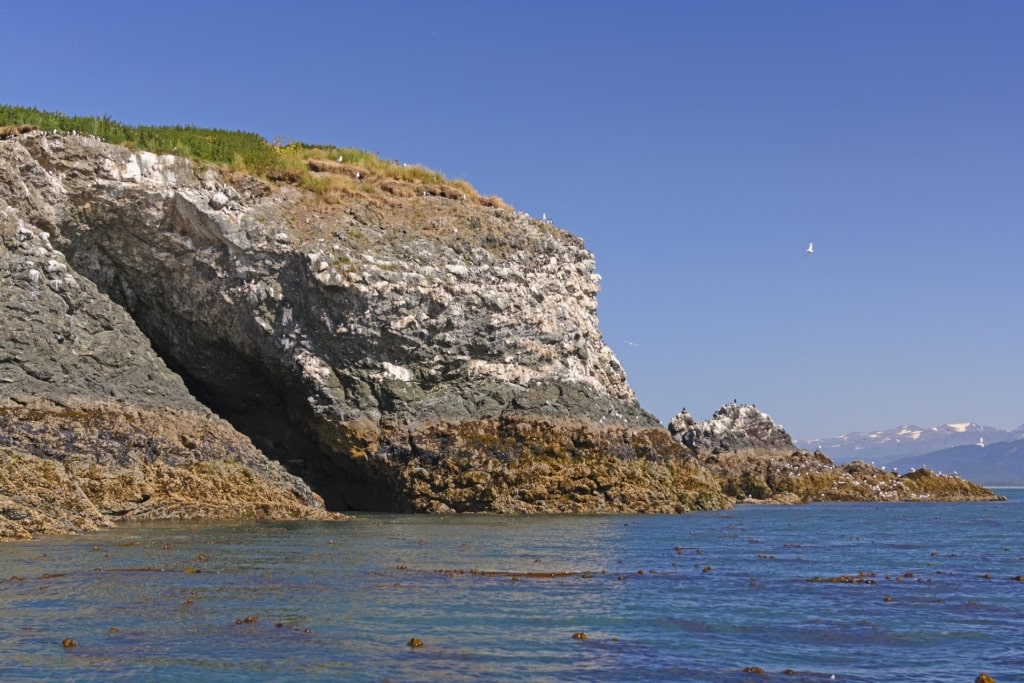
Kachemak Bay, near Homer
Kachemak Bay is celebrated for its abundant and varied marine wildlife, drawing in avid whale-watching enthusiasts every single year.
The bay sees humpback whales, orcas, gray whales, and occasionally fin whales plow through its waters. Sea lions are also common here, and if you’re fortunate, you may catch a glimpse of beluga whales, too.
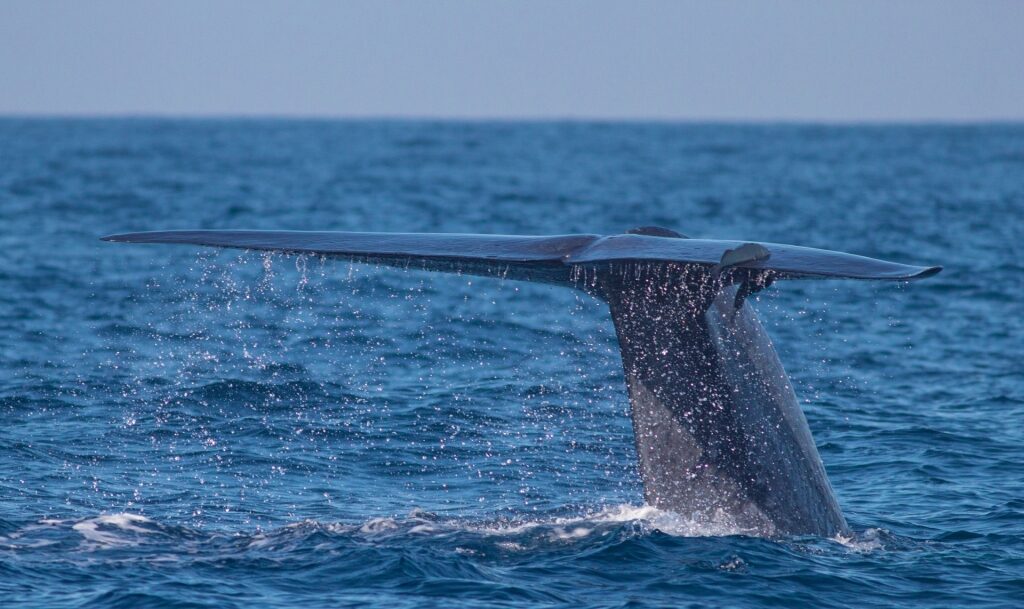
Blue whale
And if you’re extremely lucky, there’s a chance that you may get to spot enormous migratory blue whales, the largest creatures on the planet, cutting through the waves.
Whale-watching tours, which sail out of Homer, will teach you more about the region. Expert guides familiar with the local marine ecosystem will impart their knowledge, especially related to migrating species seeking food in Kachemak Bay (a part of Cook Inlet), including tail-slapping humpback whales.
Read: Things to Do in Homer
Stephens Passage & Frederick Sound, Near Juneau
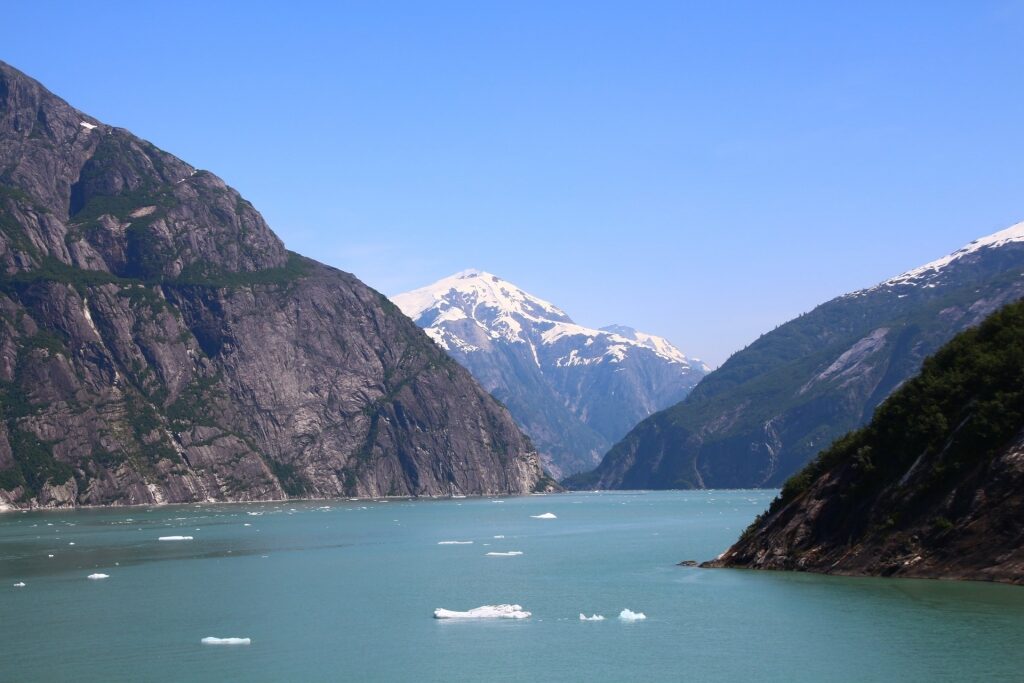
Stephens Passage, near Juneau
Delight in an exhilarating Alaska whale-watching excursion in Stephens Passage, part of the Inside Passage.
The area is packed with whale-based excitement that Alaska is known for. Observe the spectacle of over 100 humpback whales returning each year to feast on plentiful stocks of krill and herring, which is an incredible sight to observe.
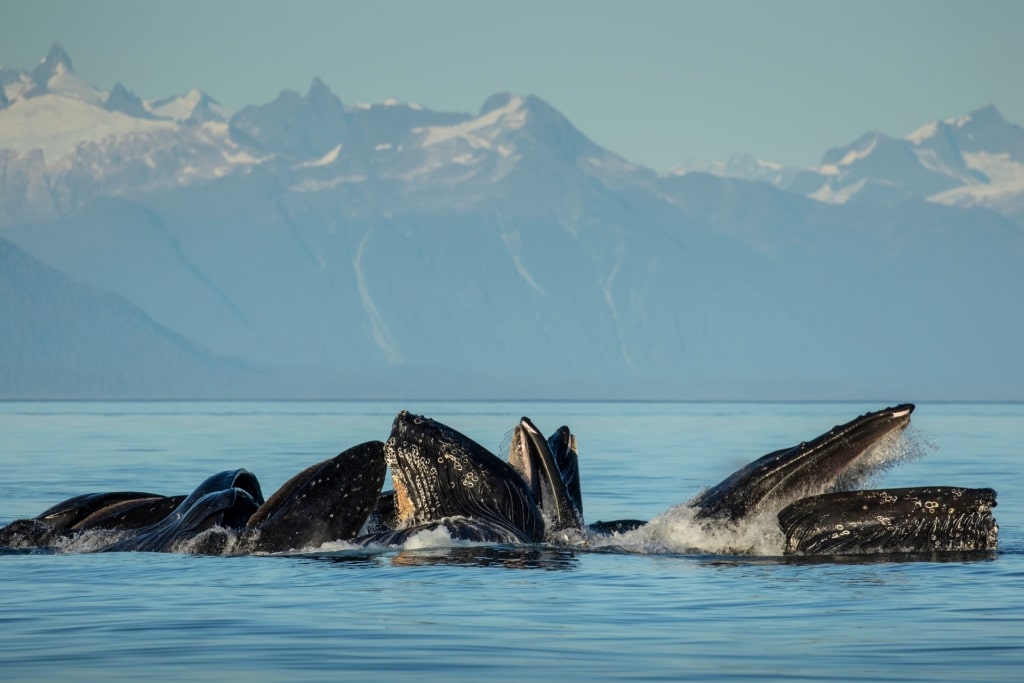
Humpback whale
Stephens Passage and Frederick Sound, situated between Kupreanof Island and the mainland, are top-notch humpback whale-watching territories, best visited during the spring to early autumn.
Humpback whales spend approximately six months in Stephens Passage, feeding before returning to Hawaii for breeding and giving birth. Humpbacks are creatures of habit and wildlife guides can often identify individual animals from their behavior and the marks on their tail flukes.
The region is also home to a vibrant community of Steller sea lions, while sightings of orcas and gray whales are also fairly common. If you want to schedule a whale-watching Alaskan adventure in Stephens Passage, consider smaller charters or catamaran cruises offered by operators based in Juneau.
Sitka Sound
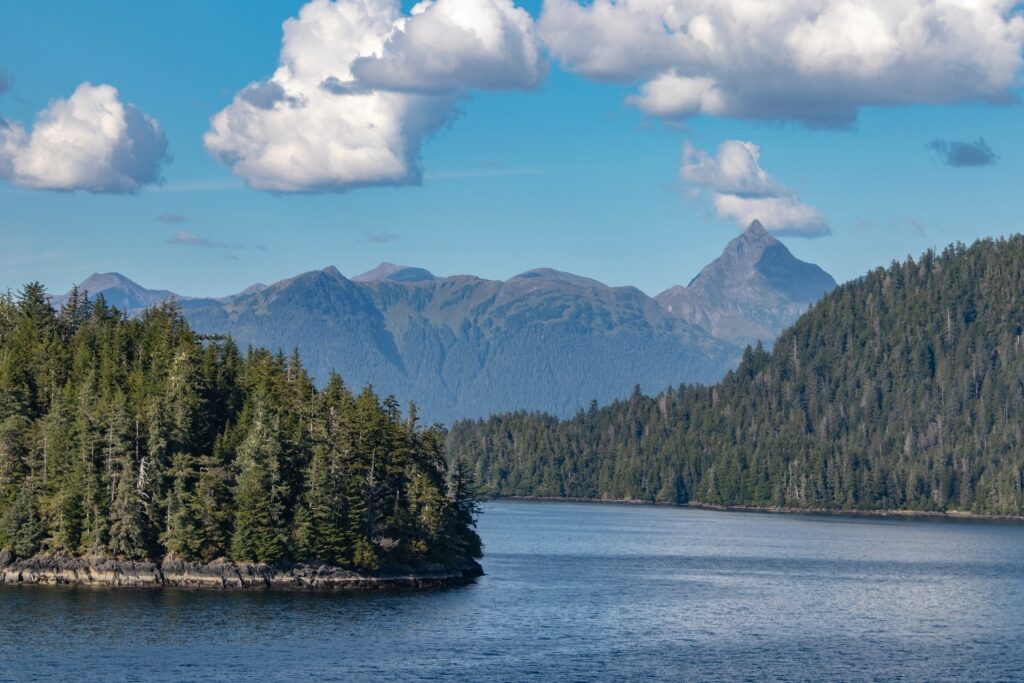
Sitka Sound
Sitka Sound, and the town of Sitka, situated within the beautiful Alexander Archipelago in southeastern Alaska, rank high as reliable spots for whale watching.
This entrancing locale will present you with a variety of opportunities to witness the nimble aquatic splendor of humpback whales, orcas, gray whales, and even, on occasion, minke whales.
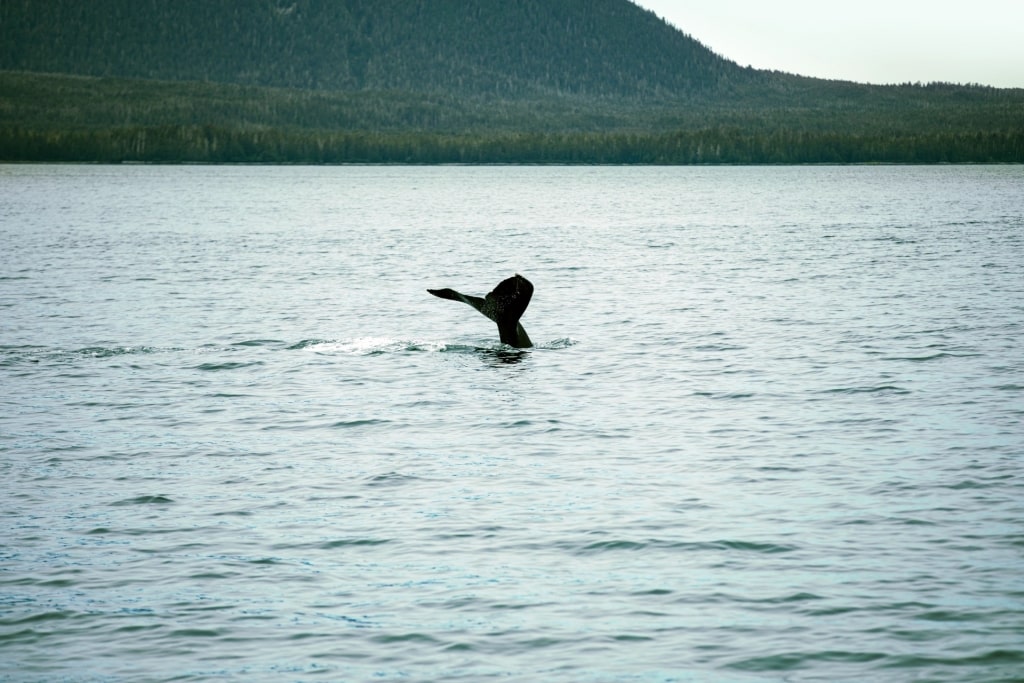
Humpback whale
Sitka’s proximity to the Pacific Ocean attracts diverse marine and avian species throughout the year. In autumn, it becomes a crucial resting place for humpback whales on their 6,000-mile round-trip migration to Hawaii.
Enhance your whale-watching time in Sitka by opting for a small vessel scenic excursion. These tours usually provide comfortable heated cabins, weather-resistant rain gear for unpredictable weather, quality binoculars, and expert guides to help ensure you have an exceptional marine mammal-spotting experience.
Read: Best Things to Do in Sitka
Tracy Arm Fjord, Near Juneau
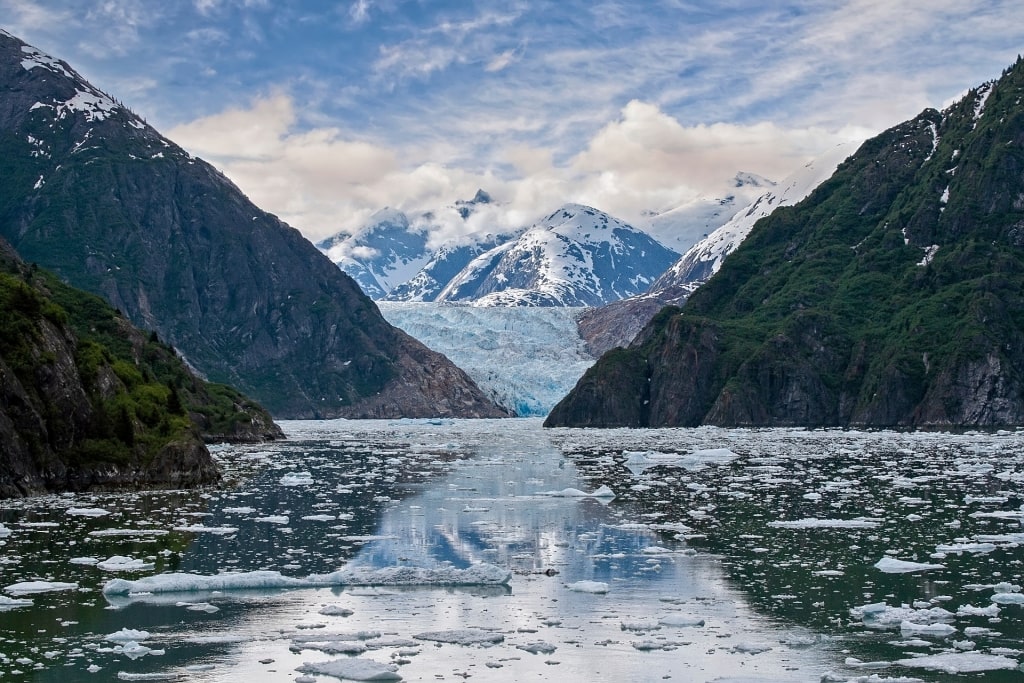
Tracy Arm Fjord, near Juneau
Tracy Arm lies within Tracy Arm-Fjords Terror Wilderness and offers fantastic whale-watching opportunities in Alaska.
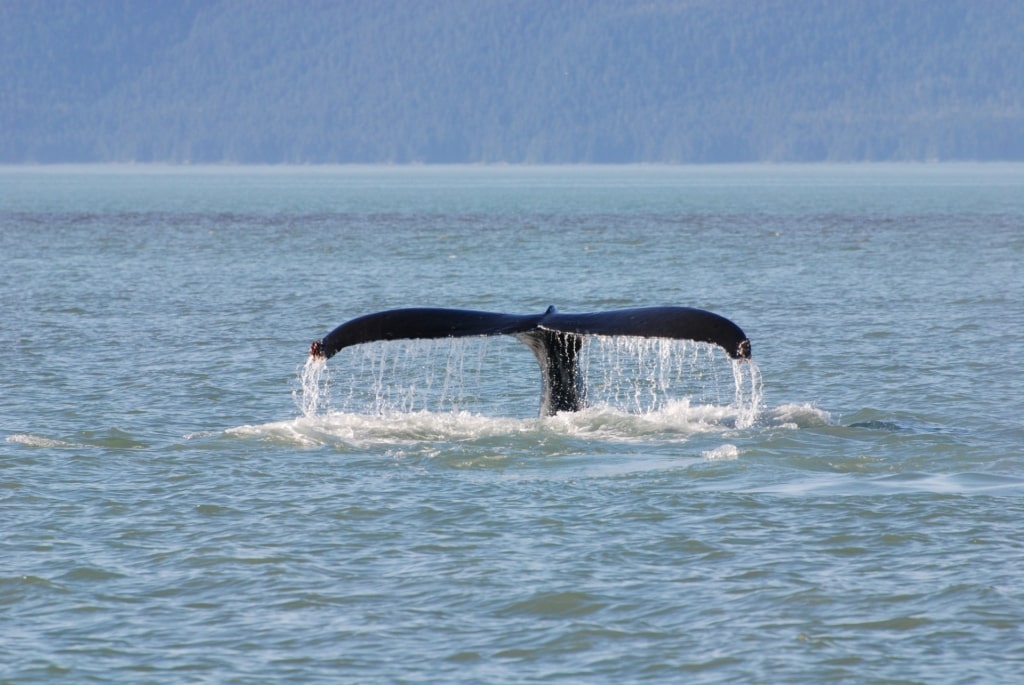
Humpback whale
Orcas and humpback whales are frequently spotted in Tracy Arm, thanks to the abundance of food here, particularly during the summer in Alaska.
Humpback whales migrate to Tracy Arm to dine on small fish and plankton, joining other marine mammals here including killer whales, porpoises, seals, and sea lions.
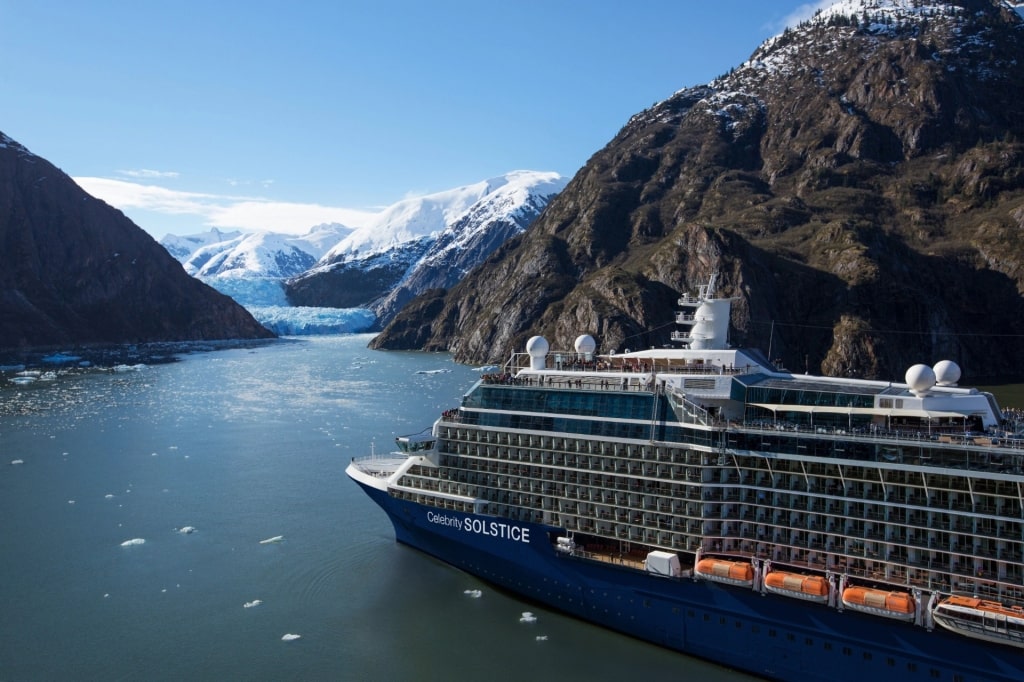
Tracy Arm Fjord, near Juneau
Now that you’ve learned a thing or two about whale watching in Alaska, browse Celebrity’s cruises to Alaska to enjoy stunning fjords, pristine coastal waters, and plenty of opportunities for up-close encounters with a variety of amazing whale species.
